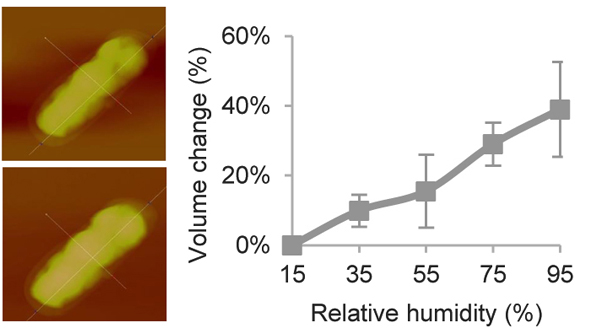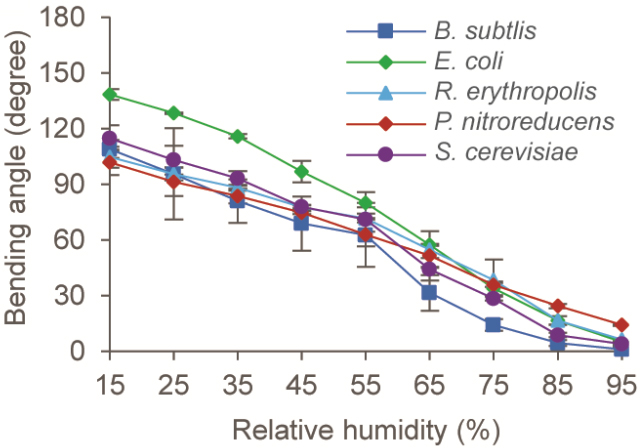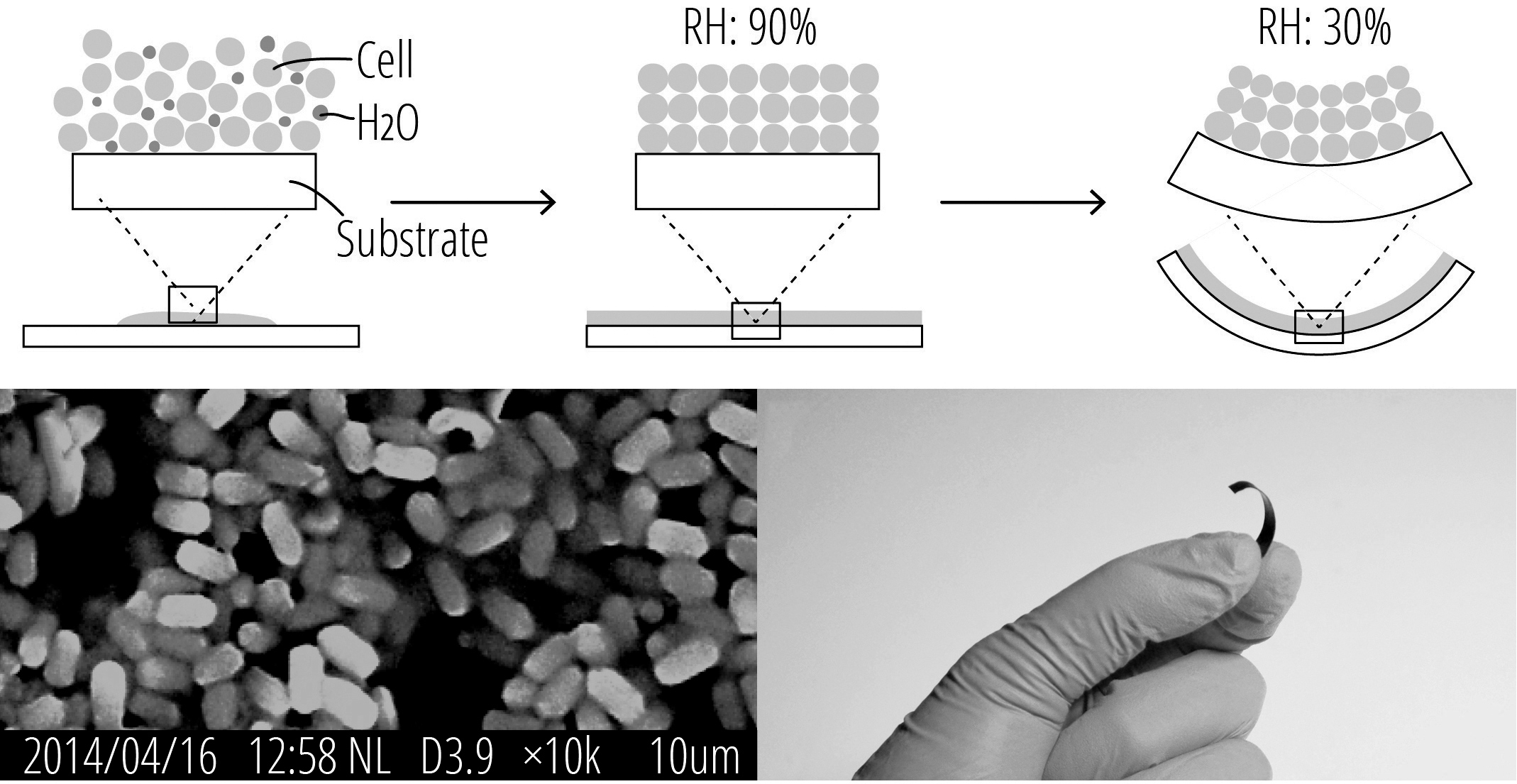We introduce Bacillus subtilis natto cells as nanoactuators for designing transformable thin sheet materials, which respond to humidity change. The hygromorphic phenomenon of cells has been well studied, especially with regard to some plants, such as pine cones and wheat awns. We observed similar hygromorphic behavior in the B. Subtilis natto cell. By varying the relative humidity around the cells, the size of the cells can reversibly change.

Beyond natto cells, we also tested a variety of other cells, e.g., Escherichia coli and yeasts. Natto cells were eventually chosen based on a few criteria: biosafety level, expertise level to handle, syn- thesis complexity and actuator performance. For example, E. coli has a higher requirement on its biosafety level; moreover, while yeast is safe to use, the actuating performance is inadequate compared to the natto cell.
Our hypothesis regarding the natto cells’ working principle at the molecular level is as follows: cell expansion behavior is due to water absorption by intracellular components, including nucleic acids, proteins and polysaccharides. We further strengthened our hypothesis by testing whether pure proteins, cellulose and DNA also display hygromorphic behaviors.





